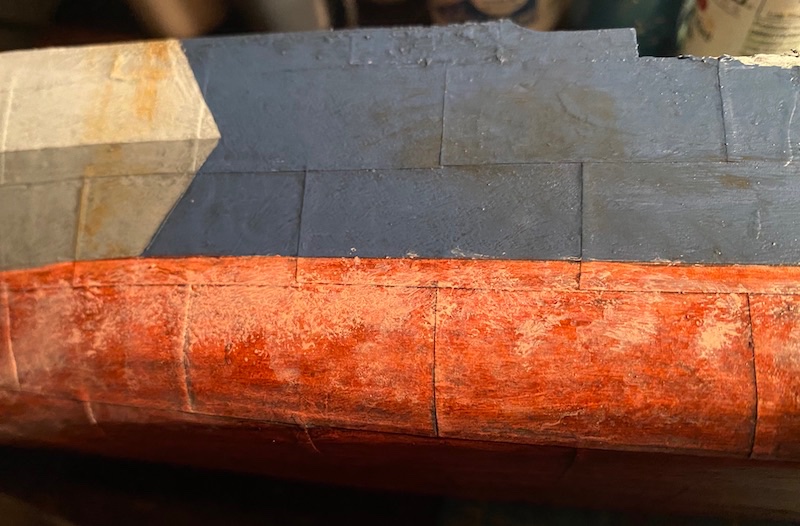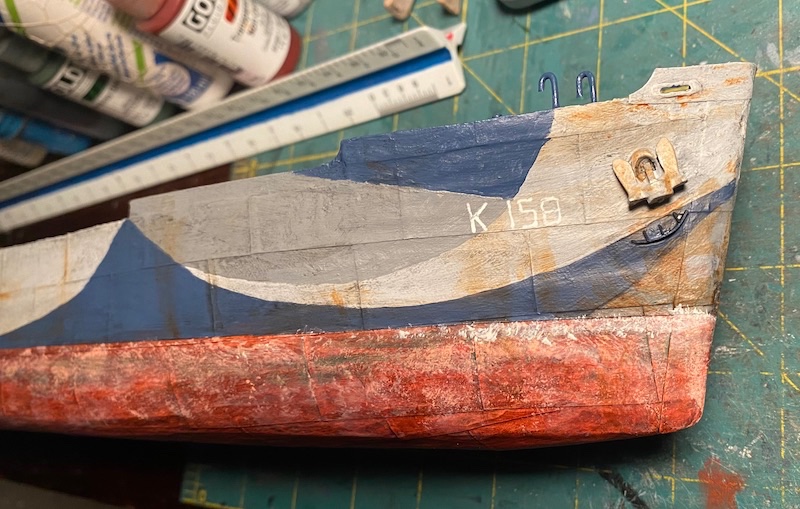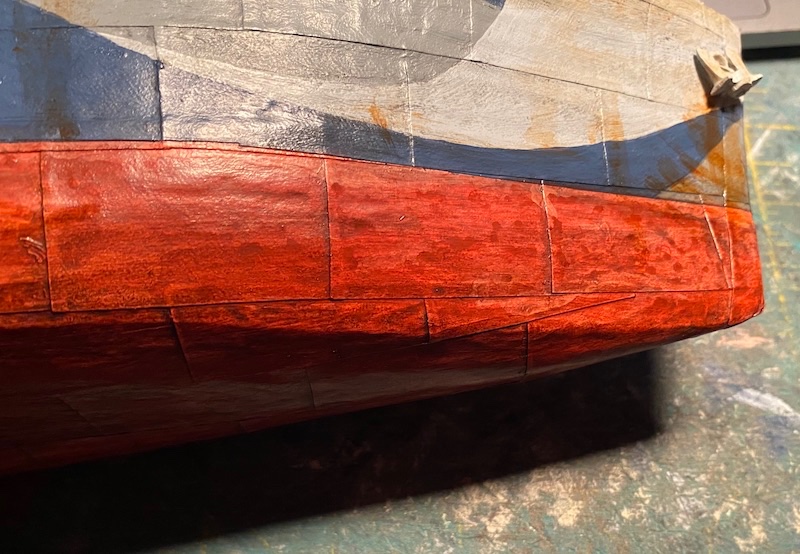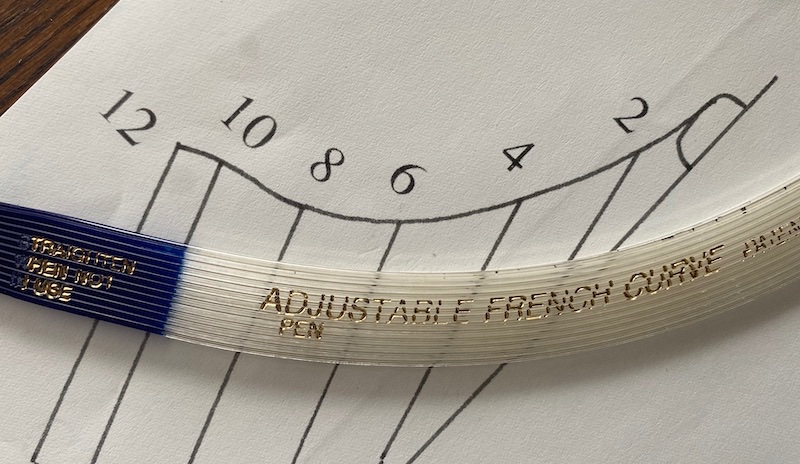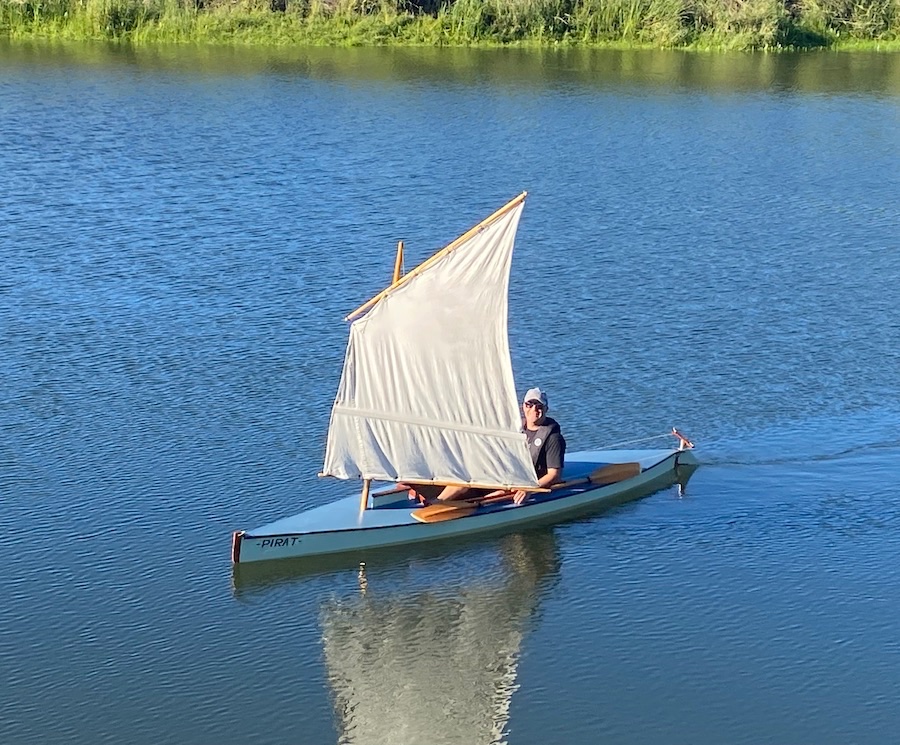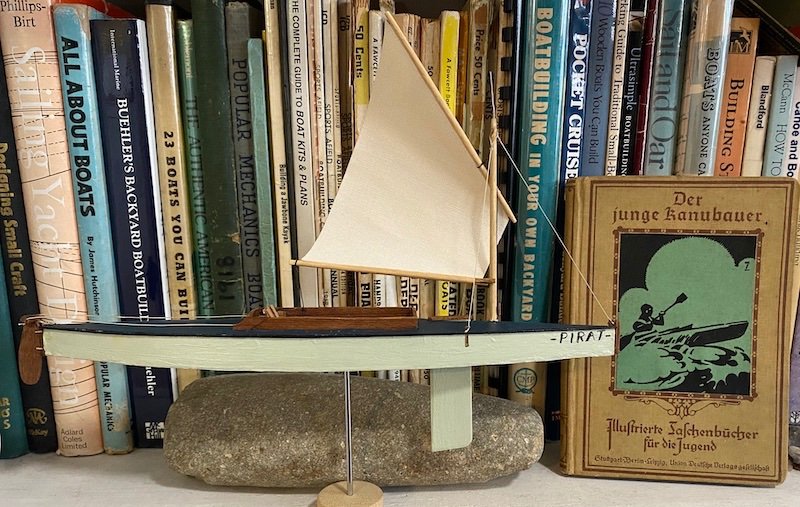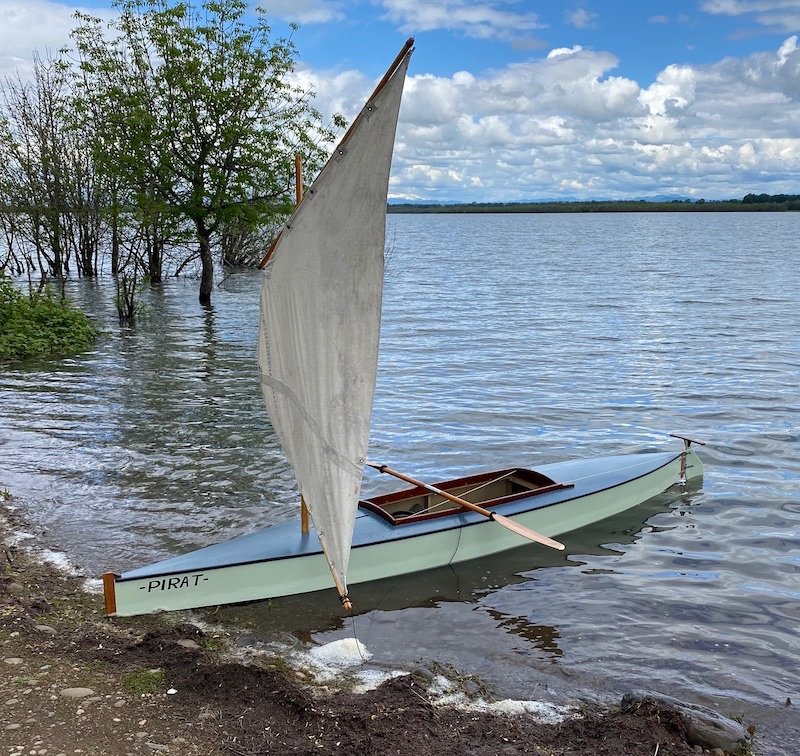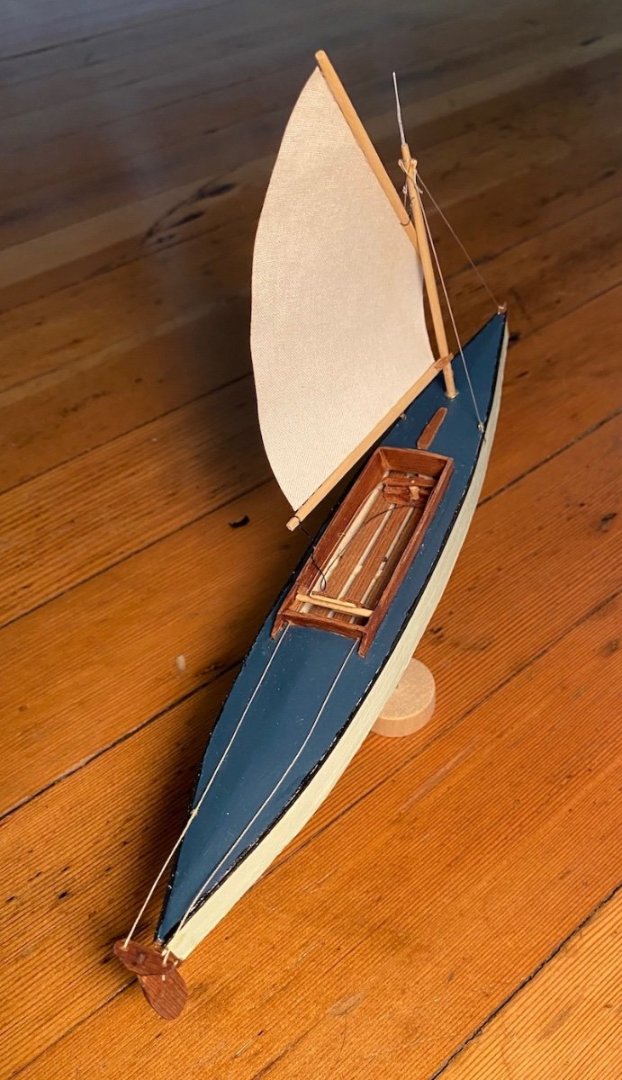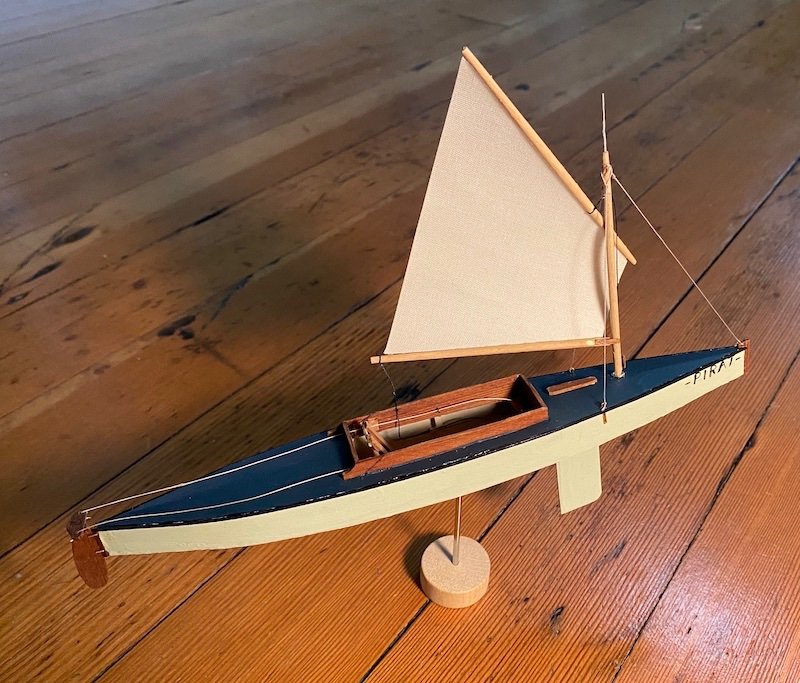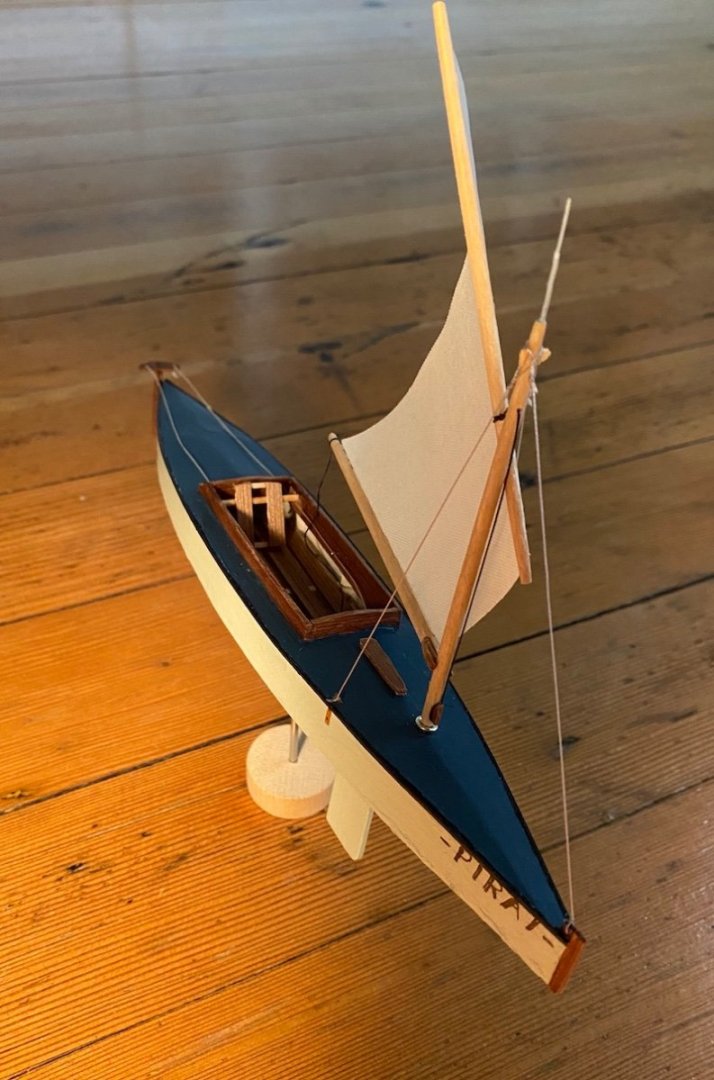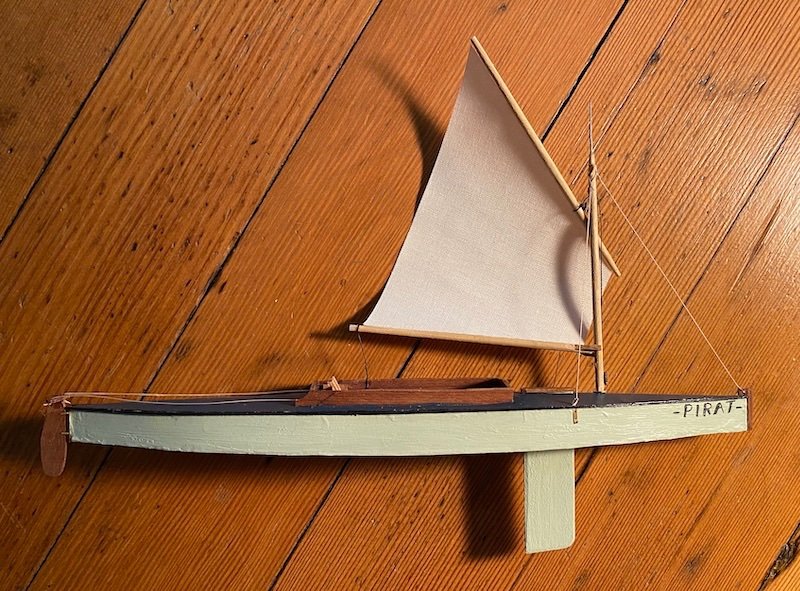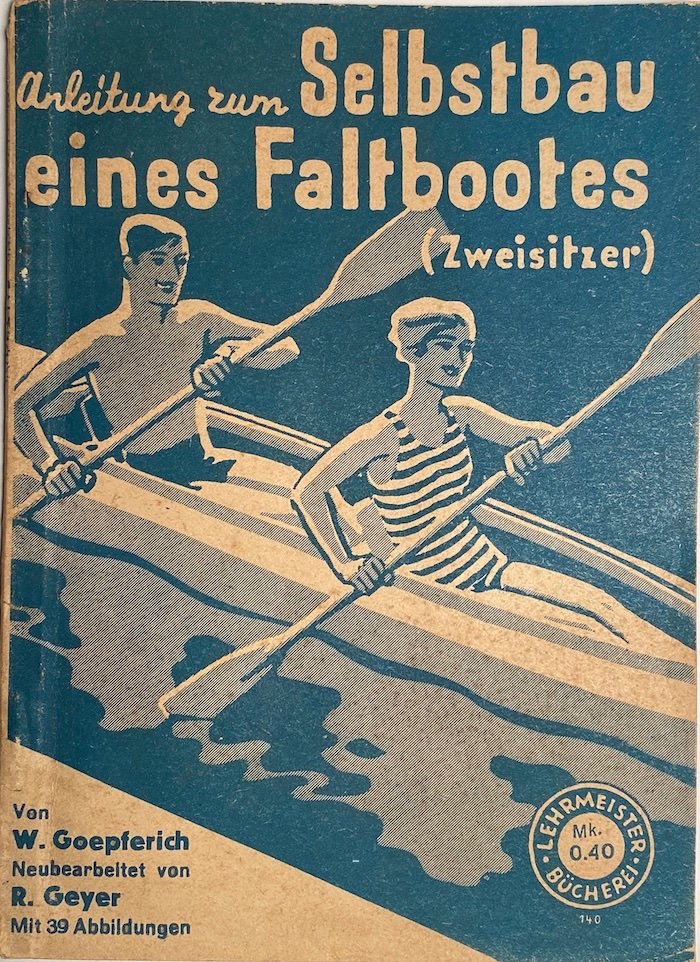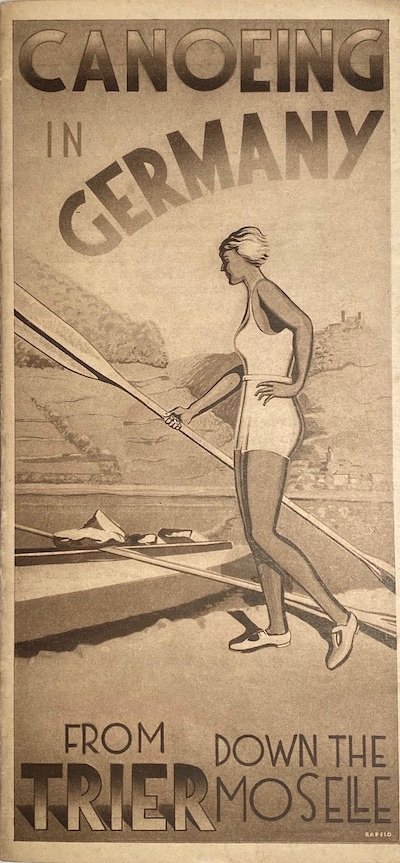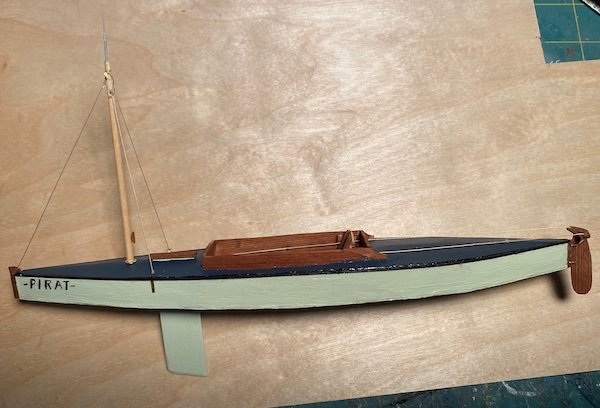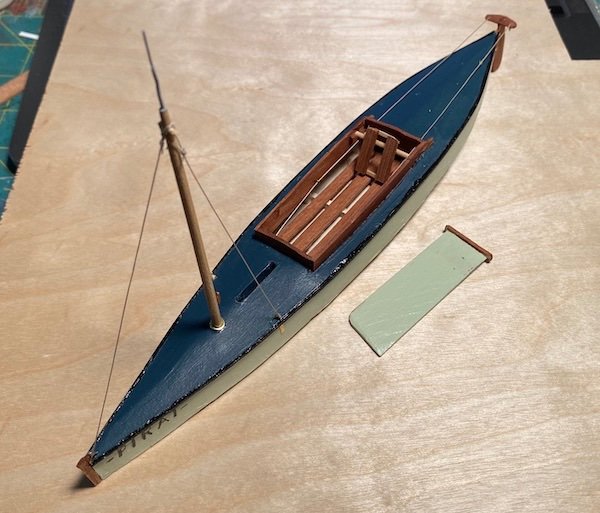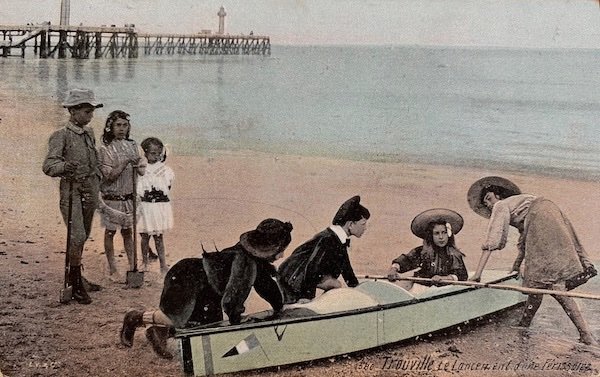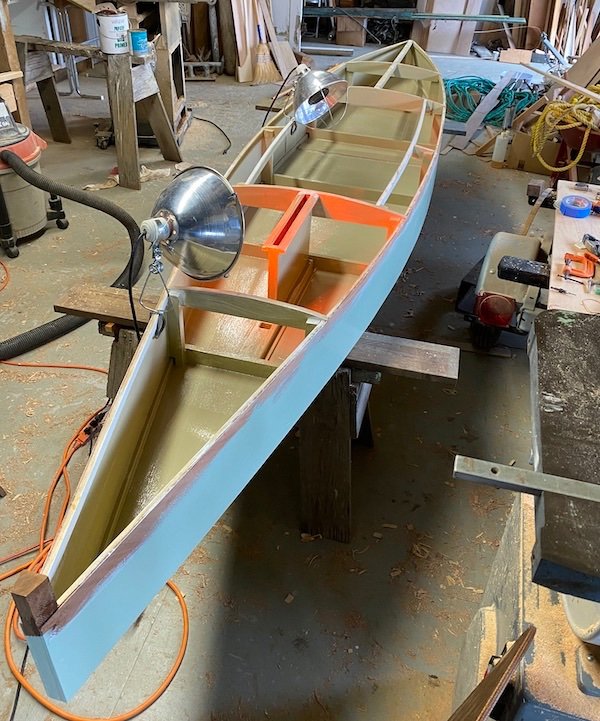-
Posts
447 -
Joined
-
Last visited
Content Type
Profiles
Forums
Gallery
Events
Everything posted by Harvey Golden
-
This is very nice to see! Incredible detail, and beautifully done. The intensive research has paid off, I'd say. I've also built a model of this type, using Van Gaasbeek's book for lines/sections, and on-line photos for details, which were meagre. I look forward to seeing more pics, etc. Best, Harvey
-
Beautifully done! I've also been aboard, and it is a great museum to visit. Did you make any changes to the model post-visit? I like the sled-- was it in the kit? -Harvey
- 8 replies
-
- St Roch
- Billing Boats
-
(and 1 more)
Tagged with:
-
Ah-- that makes so much sense! The social aspects of a technical illustration are easy to overlook. Thank you.
-
Thank you Druxey-- That is an interesting historical record, especially with regards to the non-staggered joints. I can't for the life of me imagine though why such a drawing was made-- seems like a half-paragraph of text would provide all the information needed for the proper sheathing of a ship. Quantity of lead, weight & balance, lining, etc. could all easily be derived by other means. No doubt I'm missing something. Best, Harvey
-
I think it's done-- after the above photo I added some sponged-on pink wash (below), then ran a bit of green over it all with my fingers and sponged a bit of white along the waterline (bottom). It's got one coat of satin clear finish, but could use another. I'm happy with the results, and I may have to give similar treatment to the other ships I've built over the years. The rust was made from thinned-down Golden brand Acrylic Transparent Iron Oxide-- dabbed on by brush, then dragged with my fingers. Never thought those days spent finger painting in pre-school would pay off. Best, H-
-
I'm in the ongoing process of getting the bottom paint looking right-- at least to my eyes and intention. Red right out of the can works fine, of course, but after years of poking around the big ships at anchor while in a kayak, there is a lot more going on with a weathered boat. I haven't got any fancy equipment, and just use brushes and liquid acrylics onto paper-sheathed strip hulls. Anyhow, I arrived at the results below and am pretty happy so far. I'll finish it up with some greenish wash and some sponged-on barnacles (and a flat clear-coat). I may sponge some thinned pink on as well-- we'll see. For any interested, the process has been a coral pink opaque primer, and then several washes of heavily watered down red-oxide, followed by a similar wash of brown, and followed by a black wash which I rubbed off by hand. (I also used the black wash above the waterline and also rubbed it off-- the paper and thicker paints really pick it up nicely). I like the been-around-the-block look on models, and I suppose I see a model ship as also being a painting of a ship. Anyhow, would love to see others' methods for this, and I'll eventually post a pic once I've got the floral schmutz and arthropods in place. Best, Harvey
-
Beautifully done! Truly captures the working boat essence. -Harvey
- 23 replies
-
- Smith Island Crab Scraper
- Wye River Models
-
(and 1 more)
Tagged with:
-
a drafting tool or paper weight
Harvey Golden replied to garyshipwright's topic in Modeling tools and Workshop Equipment
I have a set of K&E Spline Weights, but have never used them for drafting. I don't use computers for creating lines either, but I have have found plastic adjustable curves (shown below) to be perfect for inking curved lines. Only downside is having to hold them in place while inking-- not such a hinderance, though. Roger's photo above captures the value of the weights: setting a curve and being able to stand back and assess it. -
a drafting tool or paper weight
Harvey Golden replied to garyshipwright's topic in Modeling tools and Workshop Equipment
Ah-- thank you! I had always thought it was a hunting reference. I suppose it works for both. -
a drafting tool or paper weight
Harvey Golden replied to garyshipwright's topic in Modeling tools and Workshop Equipment
I have always heard them referred to as "ducks" or more formally Spline Weights. Calls to mind the expression about getting all your 'ducks in a row,' but I suspect it's coincidental. -Harvey -
This makes sense, as the paddle drips all over your legs with these long-cockpitted vessels.
- 31 replies
-
- Sailing Canoe
- Finished
-
(and 1 more)
Tagged with:
-
Thank you! The plans are at the top of the thread-- or near it. The book doesn't have a copyright date, but I've seen it noted as 1920 elsewhere, so it is public domain by now. The 1:1 is fine-- had it in 10+ mph winds and light chop just today. I would like a lower seat, i.e. center of gravity, and my steering system has a few kinks to work out, but it is a fun lively sailing canoe, though perhaps better suited to lighter winds. The sail I used is not as-per the original specs. Instead, I used an old poorly-made canvas balanced lug I had laying around-- one that has a batten, and is perhaps a little smaller than the spec'd sail. Here's a buddy in it just the other day: Best, Harvey
- 31 replies
-
- Sailing Canoe
- Finished
-
(and 1 more)
Tagged with:
-
Thank you! That is very interesting. I think there had been a similar derelict across the Columbia from Caterpillar Island (on Sauvies Island), but it could have been pieces of the Cat. Island one (I recall seeing the pieces/wreck about 20 years ago). There's still a few out there, though several have been removed in the last twenty years.
-
Thank you! I'd love to see pics of your project and the original canoe.
- 31 replies
-
- Sailing Canoe
- Finished
-
(and 1 more)
Tagged with:
-
Thank you John. Small and simple sure goes quickly.
- 31 replies
-
- Sailing Canoe
- Finished
-
(and 1 more)
Tagged with:
-
Made a nice little stand for the model-- much needed with that deep daggerboard! Yesterday's activity, below:
- 31 replies
-
- Sailing Canoe
- Finished
-
(and 1 more)
Tagged with:
-
That is exquisite! Always nice to see Henry Wood Elliott's illustrations too. I haven't got the book (perhaps it explains in it...), but it seems unusual for an open boat to have a complete ceiling. Beautifully done! -Harvey
- 4 replies
-
- purse seine net
- Fishing Schooner
-
(and 1 more)
Tagged with:
-
The bound sets do have a number of photographs-- not likely all taken by researchers, but they are well-curated. There is also updated (ca. 1980s) information and background on most of the boats included. Another very nice feature of the bound volumes is the introductory sections which include the history of the HAMMS program as well as retrospectives by a number of people involved. A very nice surprise is the artistic and full-color plates made by some of the researchers-- there's an entire "artwork" appendix in one of the volumes. I haven't seen sets listed for $3,000 in recent years, but have for around half that; it's actually an incredible bargain when one considers ordering all the plans individually from the Smithsonian. Here's a jot I wrote about these Volumes recently, for any interested: The Historic American Merchant Marine Survey In the midst of the Great Depression, the Works Progress Administration had many projects designed to employ workers laid off from various trades. The short-lived Federal Project No. 6 employed shipwrights, marine surveyors, and naval architects to document ships and boats around the United States. Despite its formal name (Historic American Merchant Marine Survey), many of the vessels surveyed were more common or anonymous than historic; a number of recreational craft and foreign-builds are also included. During the year-and-a-half they were active (1936-1937), they recorded over 350 vessels. Some consist of lines lifted from half-models in museums and shipyards, while others were on-site documentation of full-size vessels—some derelict, some still active. The presentation consists of the common three-view scale drawing of a vessel’s lines, and often numerous pages of construction details, machinery details, and sail and rigging plans. These drawings, while available individually from the Smithsonian Institution for many years, had not been assembled into publication until 1983, when the Ayer Publishing Co. of New Hampshire turned these into a large seven volume set, complete with an introduction on the project, retrospectives by those involved, and new introductory information on each recorded vessel. Further, the volumes include photographs of many vessels during documentation, as well as full-color and monochrome watercolor sketches made by the surveyors. The beauty of this edition is astonishing—and every drawing in it was hand inked by gifted experts, each with their own style, precision, and artfulness. The size—23-1/2” x 18-1/2” is a very worthy size for the quality of the illustrations, and many pages are foldouts. Very few libraries hold these volumes; I haven’t been able to find how many were printed. According to WorldCat, only 11 sets are in U.S. Libraries, only 2 of which are on the West Coast. The range of documented watercraft is astounding. Some of the older recorded vessels are from the 1820s, while others were just a few years old. The survey includes dugout canoes from Nicaragua, a U.S. Revenue Cutter, sharpies, scows, schooners, barks, full-rigged iron ships, sponge fishing craft, tug boats, steamships, stern- and side-wheelers, and even two Polar exploration vessels (Peary’s S.S. Roosevelt, and what may be the only larger vessel from the survey still in existence: Roald Amundsen’s Gjöa). Small inshore fishing craft of many designs and lineages are also represented. The West Coast is well represented for some areas, but in the Retrospective, a contributor expresses regret at not getting the program into and up the Columbia River. Columbia River watercraft have since received attention and documentation, courtesy of the Historic American Engineering Record, established by the National Park Service in 1969. The closest-to-Astoria vessel in the HAMMS set is the Steam Schooner Willapa, built in Raymond, Washington in 1908. The Willapa is masterfully recorded in over 17 sheets of drawings. The volumes include a number of vessels of this type as well as other lumber carriers, including sailing vessels built in the Puget Sound—no doubt many serviced ports on the Columbia River. That this project was ever created is a bit of a miracle; its success is perhaps even more miraculous given the necessary organization and its brief existence. At one point, the director of the project (Eric J. Steinlein) was faced with an overwhelming backlog of work the very day before the official termination of the project. He penned a letter that afternoon beginning “Dear Mr. Roosevelt…” which bought them six more months to work. That this was the right project at the right time cannot be understated. A collapsed economy and widespread poverty spelled a quick end to many already aged wooden vessels. The age of working sail was effectively over, and steel was becoming the material of choice for smaller and smaller craft—eventually fiberglass would replace the smallest of wooden work boats. During the Great Depression, the older relics had not yet rotted completely away, and they were ripe for documentation. These volumes provide a glimpse of what was—a diverse fleet no longer in existence, captured in its twilight. Also captured in these volumes are the mastery of draftsmen trained by hand, shipbuilders trained by eye, and the ever-pressing urgency of historical documentation.
-
Completed. Just a scrap of book-cloth for the sail-- holds a nice shape. I could add sail lacing to yard and boom, but the artist in me says 'done.' Here's pics of the completed model, followed by a bit more old ephemera, including another book by Willy Goepferich, this one on how to build a folding kayak (no date, ca. late 40s). Thanks for following! --Harvey Ca. 1938
- 31 replies
-
- Sailing Canoe
- Finished
-
(and 1 more)
Tagged with:
-
The Segelkanu is nearly done! The rudder is in place and the steering lines are run through the coaming back, through fairleads on the coaming sides, and to the foot pedals. The mast is stepped, and the forestay and shrouds in place. (I think it's quite pretentious to have these on a vessel this size, but I admire the designer's restraint in not including a bowsprit.) Just need to whip up a sail and all is done. . . I found an old postcard of a similar vessel. It is labeled a "Perissoire," being French, but unlike many French Perissoires, this example has slab (plumb) sides. The fore-deck is a bit of a mystery-- looks lumpy for some reason. The admiral's haughty contempt is rather charming, though I pity her crew: Lastly, the full-size-- woefully behind the model's progress. . .
- 31 replies
-
- Sailing Canoe
- Finished
-
(and 1 more)
Tagged with:
About us
Modelshipworld - Advancing Ship Modeling through Research
SSL Secured
Your security is important for us so this Website is SSL-Secured
NRG Mailing Address
Nautical Research Guild
237 South Lincoln Street
Westmont IL, 60559-1917
Model Ship World ® and the MSW logo are Registered Trademarks, and belong to the Nautical Research Guild (United States Patent and Trademark Office: No. 6,929,264 & No. 6,929,274, registered Dec. 20, 2022)
Helpful Links
About the NRG
If you enjoy building ship models that are historically accurate as well as beautiful, then The Nautical Research Guild (NRG) is just right for you.
The Guild is a non-profit educational organization whose mission is to “Advance Ship Modeling Through Research”. We provide support to our members in their efforts to raise the quality of their model ships.
The Nautical Research Guild has published our world-renowned quarterly magazine, The Nautical Research Journal, since 1955. The pages of the Journal are full of articles by accomplished ship modelers who show you how they create those exquisite details on their models, and by maritime historians who show you the correct details to build. The Journal is available in both print and digital editions. Go to the NRG web site (www.thenrg.org) to download a complimentary digital copy of the Journal. The NRG also publishes plan sets, books and compilations of back issues of the Journal and the former Ships in Scale and Model Ship Builder magazines.


